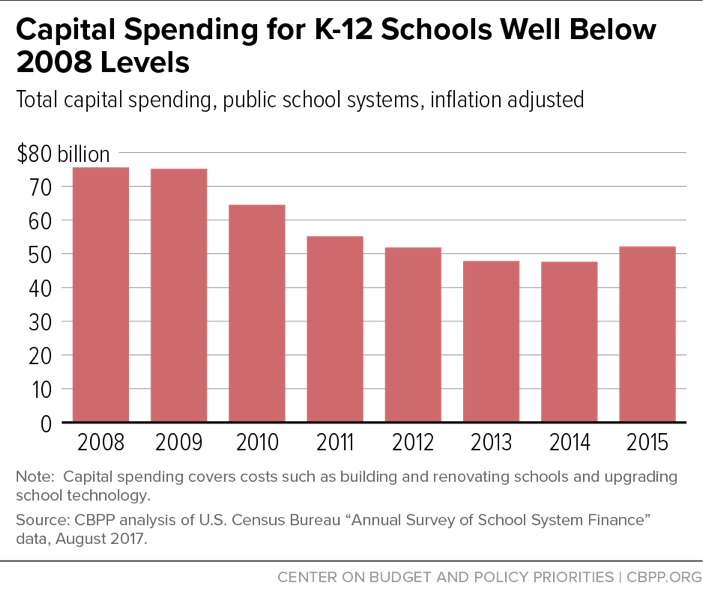más allá de los números
Time for States to Invest in Schools
State cuts in K-12 education funding over the past decade, which we’ve detailed, have affected more than schools’ operating budgets for teacher salaries, textbooks, and so on. Capital spending — to, for example, build new schools, renovate and expand facilities, and equip schools with more modern technologies — also fell sharply in most states. With President Trump reportedly leaving capital funding for schools out of his infrastructure plan, it’s time for states to reverse this trend and reinvest in school buildings and equipment upgrades.
Nationally, elementary and secondary schools cut capital spending by $23 billion, or 31 percent, between fiscal years 2008 and 2015 (the latest year for which we have data), after adjusting for inflation. (See graph.)
Thirty-seven states cut capital spending in inflation-adjusted terms over this period, in many cases drastically. Six states cut capital spending by more than half. Nevada, the state with the sharpest cuts, reduced capital spending by 82 percent.
The nation is $46 billion a year behind what it should spend on building and repairing K-12 schools to provide healthy and safe modern facilities, according to a 2016 report from the 21st Century School Fund, the National Council on School Facilities, and the U.S. Green Building Council.
This neglect hurts students’ health and school performance. Research has linked poor lighting, bad air quality, and noise to lower student achievement. Freezing conditions that result from aging heating systems make it hard to learn and can force unplanned school closures that disrupt studies, as Baltimore recently experienced. A higher percentage of public schools in poor areas need repair than those in the wealthiest areas.
This disrepair weakens the nation’s long-term prosperity, as we noted in our paper on states’ declining infrastructure investments. Reversing this decline is key to creating good jobs and promoting broadly shared economic growth. States can use many tools to find the revenues, from borrowing to taxes, to address this critical need. It’s time for them to prioritize investment in all aspects of K-12 education.

